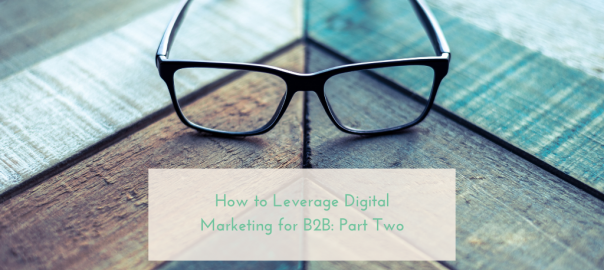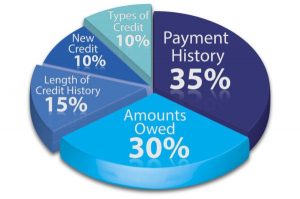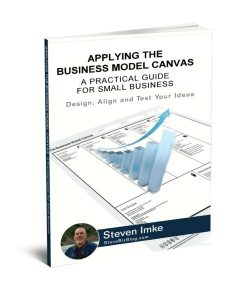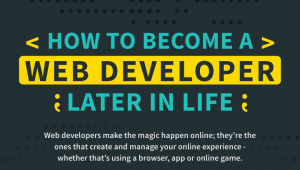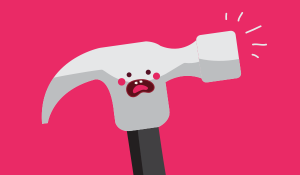
When considering the use of social media marketing for their B2B brand, many either dismiss the idea entirely or plan a limited posting schedule simply for exposure. After all, the rest of the world is using social media—and by “rest of the world” we mean 3.96 billion people, so that’s pretty close. You kinda have to be there, too, right?
The answer, in short, is yes, you should be there, too. But you have many more opportunities to leverage the opportunities that digital marketing, specifically through social media, can provide. Even more important than the number of people on social media is the number of people who investigate businesses on Facebook, Twitter, LinkedIn, Instagram, Snapchat, and TikTok before making a purchase: 60% of consumers.
How can you leverage this power for a business that doesn’t have consumer products to feature?
Go Where They Live
You now have a good idea of your target audience now: what they like and don’t like, how they spend their money, and the most likely age group they fall in. You can use that information to determine where on social media they’re most likely to spend their time.
Don’t assume that your audience will be on Facebook, though it’s not a bad bet to make. More than 2.6 billion people around the world use Facebook, and more than 69% of adults in the US, or nearly 190 million people, are users. Of that 69% of Americans, 51% are on Facebook more than once per day.
Facebook is also the most likely social media outlet to see people between the ages of thirty and sixty-four, and 46% of adults over the age of sixty-five say they use Facebook.
In other words, you’ll probably find them here. In fact, business decision-makers spend 74% more time on Facebook than other people. But that doesn’t mean it’s the best place to reach them. Keep in mind these statistics for Facebook:
- 73% of urban residents use Facebook, while 66% of rural users have accounts.
- 61% of people with a high school diploma or less use Facebook, and 74% of those with more than a college degree.
- 69% of those making less than $ 30K use Facebook, and 74% of those making more than $ 75K.
In other words, the user base is vast and varied, and you’ll need to use significant audience targeting to reach the right buyers with this platform.
Then, there is Instagram, which has almost 1.1 million global users and is one of the most popular social networks available. Of the 63% of daily American users on Instagram, 42% say they check in more than once per day. More importantly, while only 31% of B2B marketers say they use Instagram for their business, they rank it highest in engagement.
While Instagram users do tend to be younger, with 72% of people between ages thirteen and seventeen using it and 67% of people between eighteen and twenty-nine, older Millennials and Generation X users are growing, with 47% of people between thirty and forty-nine using their accounts. Keep in mind that 73% of US Millennials are in decision-making roles at their jobs.
Twitter doesn’t pack the punch it once did, with only 62 million users in the United States, but it does tend to attract more users who have college degrees, with only 13% showing less than high school education and 66% having a college, graduate, and post-graduate degrees.
There is also greater gender disparity on Twitter, with 66% identifying as male, and 34% female.
However, 79% of Twitter users like to discover new things there. That’s why 71% of B2B technology marketers prefer Twitter for product launches.
As you can see, the particular audiences on each of the social platforms vary widely, which means you should thoroughly investigate each before you determine where you will focus the bulk of your efforts. And, of course, there is also LinkedIn, which was developed specifically for business-to-business networking.
Again, LinkedIn doesn’t have the sheer numbers backing it like Facebook does—only boasting 660 million registered users—but it does have one thing you can count on that you can’t with other platforms: an audience there specifically to do business of some sort. They’re already in the right frame of mind, as long as you reach the right people.
Also, as yet another about-face from Facebook, LinkedIn has an adult-only audience, with 28% of users between the ages of eighteen and twenty-nine, 37% between thirty and forty-nine, and 24% between fifty and sixty-four. These users make more money and tend to have higher education, with 51% having a college degree or more.
Decision-makers spend their time on LinkedIn, with 63 million of those 660 million registered users identifying as the person who makes purchases or chooses service or product providers for the company. Also, 90 million of LinkedIn users identify as senior-level influencers of company decisions.
How to Share
Once you have an idea of where your audience lives, you can start planning content for your social media platforms that will really speak to them. Remember, this audience isn’t looking for consumer products; they’re looking for a company that can solve their specific pain points.
Pain Points and Solutions
Start with those. What problem do you anticipate your likely buyers to have? What specific pain points does your company solve? More importantly, how do you solve it?
When you answer these questions, always focus on the benefits the buyer will receive. Features that make your business different from your competitors are great, but the real meat of the post should be how your buyer will happier because of the specific benefits they receive.
For instance, if you provide accounting services, your customers won’t care much about the custom software you use. They want to know that the time you save because of that custom software means they get more accurate accounting at a fraction of the price.
Success Stories
Sharing stories about your success is a great way to provide some social proof, backed up by testimonials from your most loyal customers. Always make sure you have permission to share these stories before you do. Once you have the go-ahead, share photos of your clients, information about their problems and how you solved them, and highlight the employees responsible for that success.
Feature Your Services
Sometimes people don’t know they have a pain point until you make them aware of it. After all, Henry Ford said, “If I had asked people what they wanted, they would have said faster horses.”
This is where sharing information about your products and services can come into play. Highlight some of the unique solutions you provide. Show them the automobile so they’ll stop settling for the horse.
Staff Features
One huge factor in your brand is your staff. These are the people you count on to make sure everyone they meet walks away with a positive impression of your company. Take the time to feature them whenever you can, whether because of their super-creative workspace or the amazing job they did serving a customer.
Buyers like to see the faces behind the brand. It creates a connection that is harder to break when they consider making new purchases.
As you can see, there are plenty of ways to highlight your B2B brand on social media. Next time, we’ll discuss SEO and advertising so you can expand your reach to new audiences.
Digital & Social Articles on Business 2 Community
(33)
Report Post